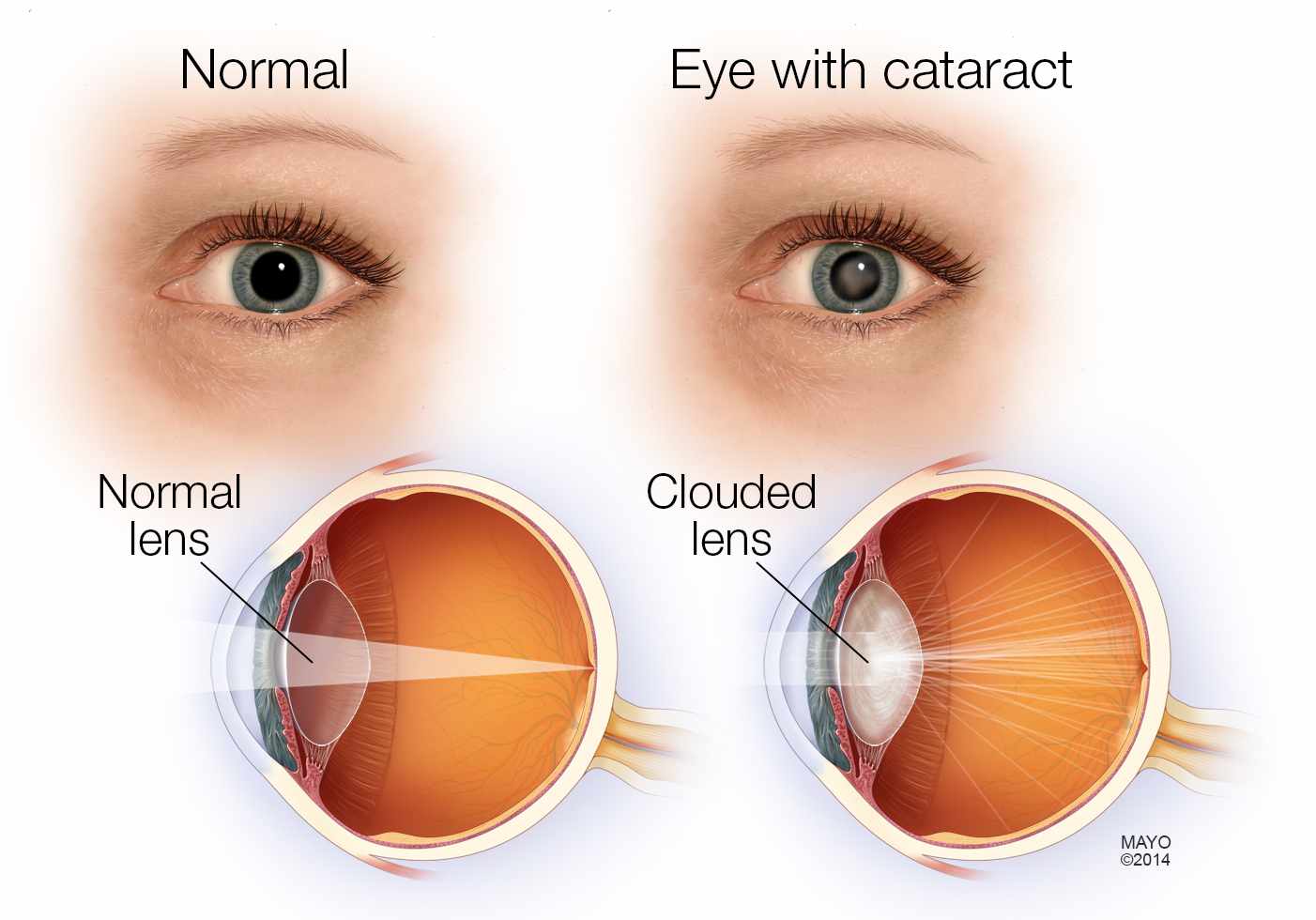 Image source: mayoclinic.org
Image source: mayoclinic.org
Cataracts: Signs, Symptoms and Treatment Options
A cataract is a cloudy area on the eye’s lens. Cataracts are a common condition in older people, with more than half of all Americans age 80 or older having experienced them. The process that causes cataract formation is usually a slow one, beginning decades before you notice obvious vision changes. Some cataracts are not age-related, but follow an eye injury or glaucoma surgery.
Because several conditions can cause cloudy or blurry vision, it’s important to understand the specific signs and symptoms of cataracts. If ignored, cataracts can lead to blindness. However, new surgical techniques not only remove your cataracts, but may greatly improve your vision overall. Find out if cataracts may be behind your blurry vision, and learn how Dr. Matzkin can safely restore your sight.
Cataract Signs and Symptoms
Cataract signs and symptoms can vary between individuals. In addition, it’s possible to have a cataract in one eye only. While the only definitive way to diagnose cataracts is through a dilated eye exam, there are specific things that most people experience when they have cataracts. Note that the following signs tend to get worse over time.
Blurry, hazy or cloudy vision is the primary sign. Unlike other causes of blurred vision, such as near-sightedness or far-sightedness, cataracts cause your vision to blur at any distance. You may start to struggle with normal everyday tasks, such as reading or driving. This is especially true when trying to read in low light or when driving at night.
However, bright light sensitivity can also indicate cataract formation. If you struggle to see outside on a sunny day, or if your indoor lights suddenly seem too bright, cataracts could be the reason. You may also notice halos around lights or experience periods of double vision.
The way you view colors can also point toward the presence of cataracts. Many people report that colors don’t seem as bright as they used to be. Others say that their overall vision has developed a brown or yellow tinge that makes everything look dull.
One unusual sign of cataracts is called “second sight” phenomenon: you suddenly find that you no longer need reading glasses. Although this sounds like a miraculous thing, it’s caused by swelling of the lens nucleus. The swelling alters the way light focuses on the retina, causing a temporary clarity in near vision. This usually happens early in the cataract formation process.
Cataract Treatment Options
The only permanent treatment option for cataracts is surgery. However, there are things you can do at home to help manage the sight changes that occur with cataract development. For example, you can:
- Use magnifying lenses for reading or close work.
- Use brighter lights at home and work.
- Wear anti-glare sunglasses.
- Get a new, stronger prescription for eyeglasses or contacts.
Because cataracts are a progressive condition, at some point you will probably want to have them removed. This is usually suggested when they start seriously interfering with your daily activities. While it’s understandable to feel anxiety over someone operating on your eyes, cataract surgery is a safe, accurate procedure. The vast majority of people who have cataract surgery report markedly improved vision afterward.
Dr. Matzkin uses the Alcon LenSx Laser to remove your cataracts and replace them with a new lens. This method is more precise than standard surgery techniques and can even correct astigmatism. In addition, the procedure is less traumatic to sensitive eye tissue than traditional surgery.
Can cataracts be prevented?
As we age, proteins in the lens begin to break down and clump together. This is a normal change that happens. At first, the clumps are small and only cloud a small area of the lens. Over time, these areas grow and make it harder to see.
Because this is a normal aging process, you cannot entirely eliminate your risk of developing cataracts. However, there are certain behaviors and conditions that can put you at higher risk. These include:
- Smoking
- Excessive alcohol consumption
- Spending a lot of time in the sun
- Taking steroids
- Having diabetes
- Having a family history of cataracts
- Having an eye injury or previous eye surgery
- Having radiation treatment on your upper body
While some of these factors cannot be controlled, it’s wise to protect your eye health by avoiding tobacco, excessive drinking and extended periods of sun exposure. Always wear sunglasses and a hat with a wide brim to block the sun when you’re at the pool or the beach. Eat a healthy diet that includes plenty of fruits, vegetables and dark, leafy greens.
In addition, make sure to schedule routine eye exams. If you’re 60 or older, you should have a dilated eye exam at least once every two years. If you notice any of the signs and symptoms above, call for an appointment (423) 855-8522.

